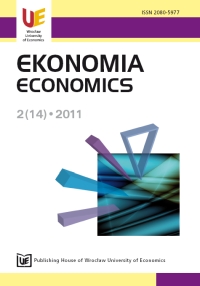Skutki pokryzysowej architektury regulacyjnej dla banków z krajów Europy Środkowo-Wschodniej
THE CONSEQUENCES OF THE POST-CRISIS REGULATORY ARCHITECTURE FOR THE BANKS IN CENTRAL EASTERN EUROPE
Author(s): Ewa MiklaszewskaSubject(s): Economy
Published by: Wydawnictwo Uniwersytetu Ekonomicznego we Wrocławiu
Keywords: FINANCIAL ARCHITECTURE; FINANCIAL CRISIS; BANK REGULATION
Summary/Abstract: Responding to the financial crisis 2007-2008, the global banking industry has been recently undergoing fundamental regulatory changes, imposed by the Basel III Agreement, the 2010 USDodd-Frank Act, and the introduction of a new European supervisory architecture. The paper analyses the possible long-term impact of this new financial architecture on the banking sectors of CEE-5 countries. Poland and other CEE countries have not been directly affected by the crisis and had no need to fundamentally modify the supervisory structures as was the case in highly developed countries. Therefore, the aim of this article is to contribute to the discussions about the anticipated long-term impact of the new regulatory arrangements for bank stability and efficiency in CEE Countries.
Journal: Ekonomia
- Issue Year: 2011
- Issue No: 14
- Page Range: 49-57
- Page Count: 9
- Language: English

